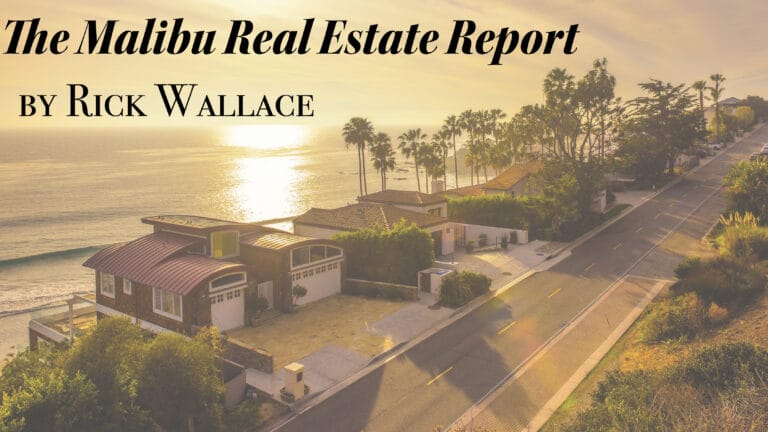
The Malibu Real Estate Report: The lowest level in 50 years?

It happened this month, a phenomenon that seemed unlikely to ever occur again in Malibu: The number of homes for sale in Malibu dropped to 92 in the mid-December count. Compared with the astounding number of sales this year, the market is skewed to a seller’s market to a degree that equals that historically hot period of 2004 to 2006 and has profound implications for prices.
Only one other—possibly in the past 50 years—has inventory in Malibu dropped below 100. The inventory count in January 2005 was at 103, inching down to 101 in February and then hitting 98 homes in March. That was the only time (in my recorded history since the 1990s) that the inventory count went below 100. Based on known market trends of the 1970s and 1980s, it is possible this current inventory is the lowest in 50 years.
For a historical perspective, there were as many as 379 homes for sale in Malibu in August 1995. By December 1998, that number crept below 300 permanently. Then, as the market of the time heated up, it submerged below 200 by November 2002. The year 2004 saw prices in Malibu go up 31 percent. By early 2005, the inventory hit its low mark of 98.
It would rise to a new peak in June 2011 at 315 homes. And gradually come down since.
Even as the pandemic was in full force in June of last year, the supply of homes for sale was 190. Now it is half.
It certainly reflects a marketplace that is wildly hot. As the supply of product has depleted rapidly, the demand only seems to get stronger. Prices have adjusted accordingly. In this market climate, there is absolutely no way that prices can go down. Only a catastrophic event or the very gradual adjustment in the supply-demand dynamic will make lower prices possible. For the foreseeable future, that literally cannot happen by the laws of economics. Prices have to go up. Until the supply-demand lines are equal, prices have to go up.
The final statistics for 2021 will be stunning. It has been a year like no other, at least when volume and average sale results come in. Likely, over 300 sales have occurred during this year. That has not happened since the aforementioned 2004. Malibu has experienced the latest of many historical periods of overwhelming appeal, attention, and demand by the public at large, as vast wealth-seeking investment and lifestyle opportunities land on our beaches and hills with astonishing impact. About every 10 years or so, on the average, does this frenzy occur in Malibu as much or more than other places.
The Woolsey Fire, which eliminated about 17 percent of the homes in Malibu, and affected the entire community in some way, still remains as a cloud over the city and its real estate. The current inventory counts are assuredly helped by the loss of homes that once existed. (Less than 2 percent of Malibu’s homes have been rebuilt. That is, 17 percent was lost, 2 percent has returned, and only about 10 percent of what was lost has returned). Thus, Malibu is a statistically different place than before November 2018. Population stats have borne that out.
Looking at the inventory counts in more detail, the number of homes for sale under $2 million is four. Just four! When the Woolsey Fire hit three years ago, there were 25 available that day. At the other end of the spectrum, beach homes for sale are 27. As recently as November of a year ago, that tally was 53.
Some of this market craziness makes up for the 10-year pause in Malibu appreciation following the real estate collapse around 2008. The Malibu median price in 2007 was $3,050,000. In 2018, it was $3,250,000. Not much change. But THAT has changed. Now it is topping $5 million, with the final 2021 numbers coming in soon.